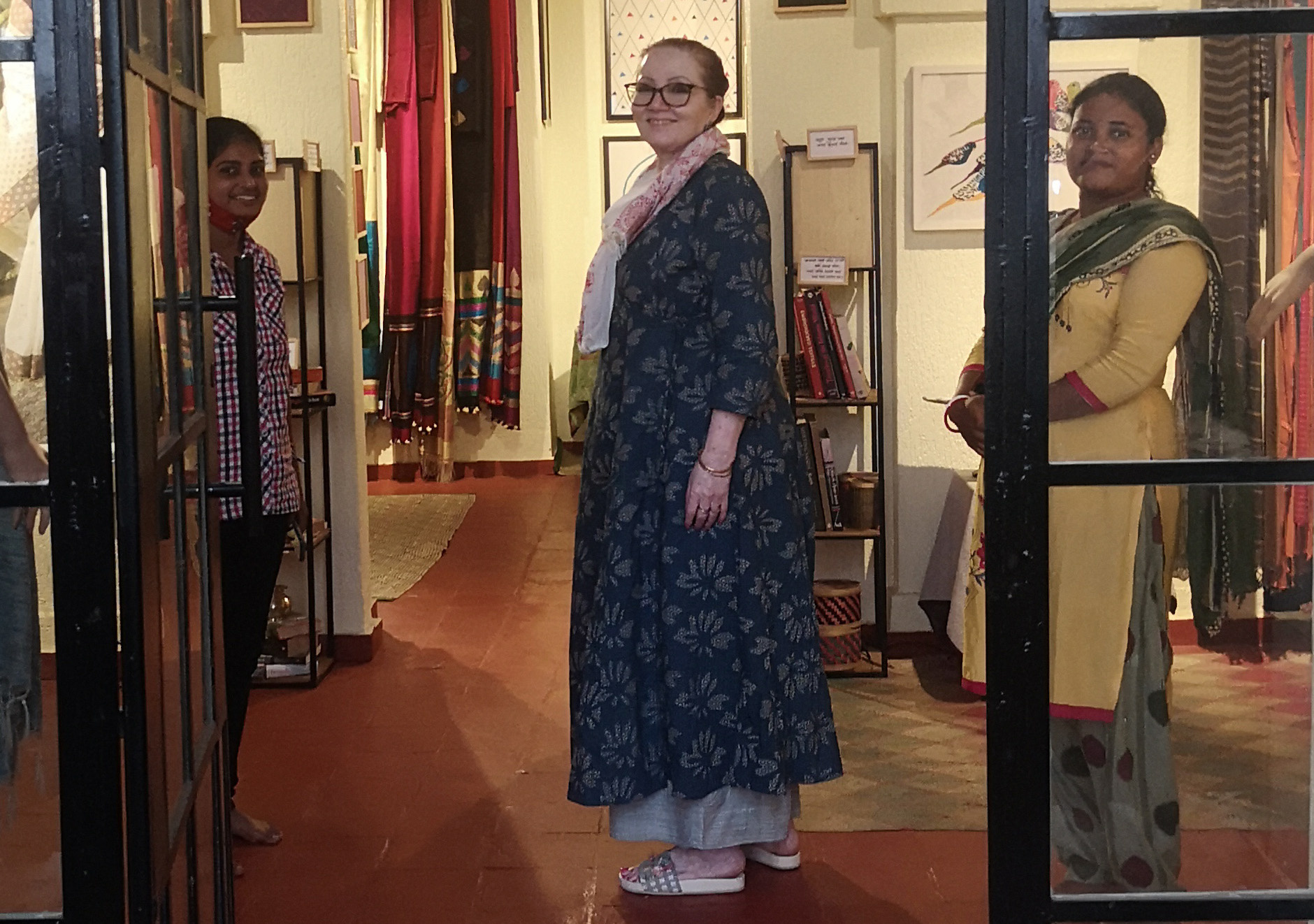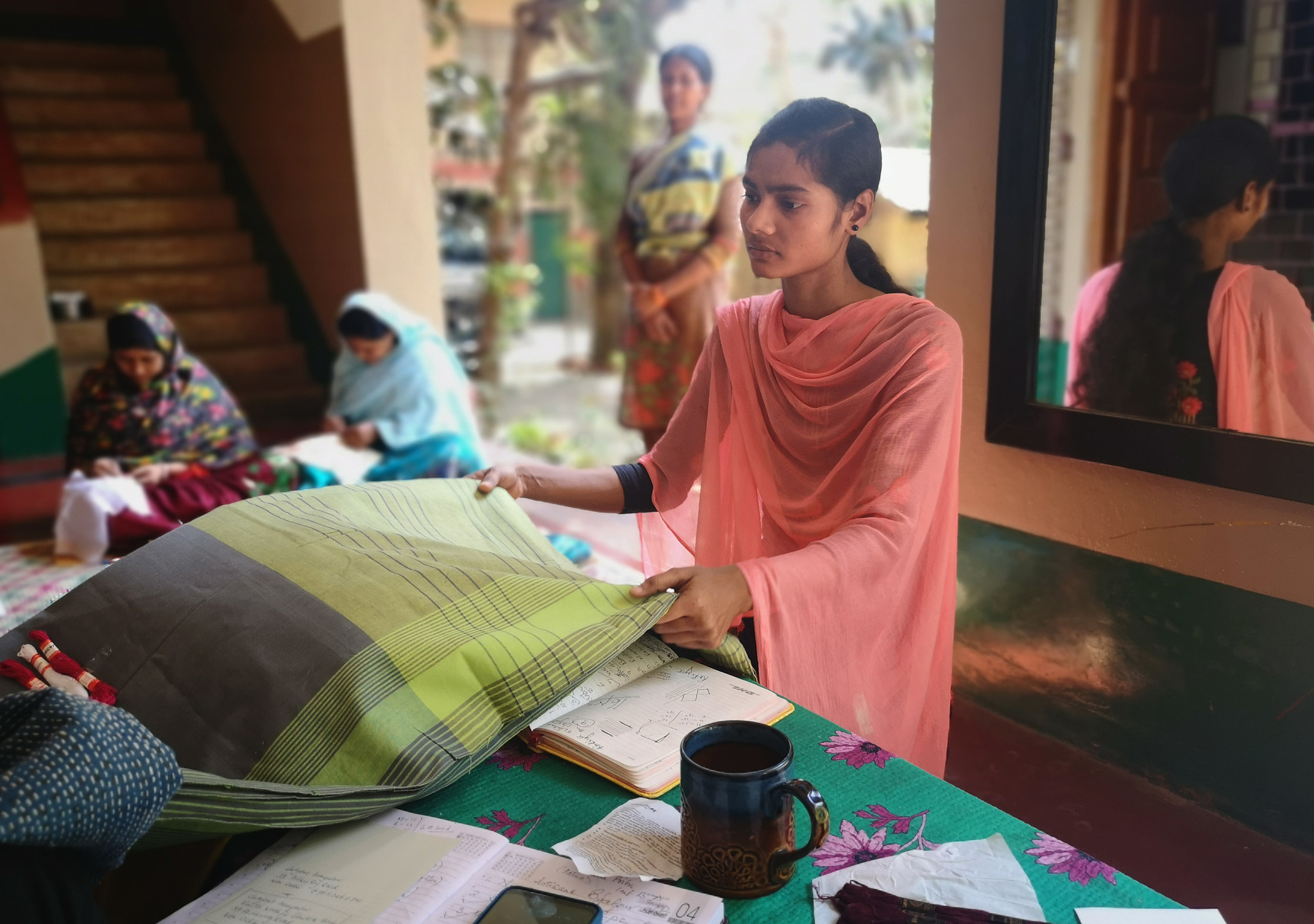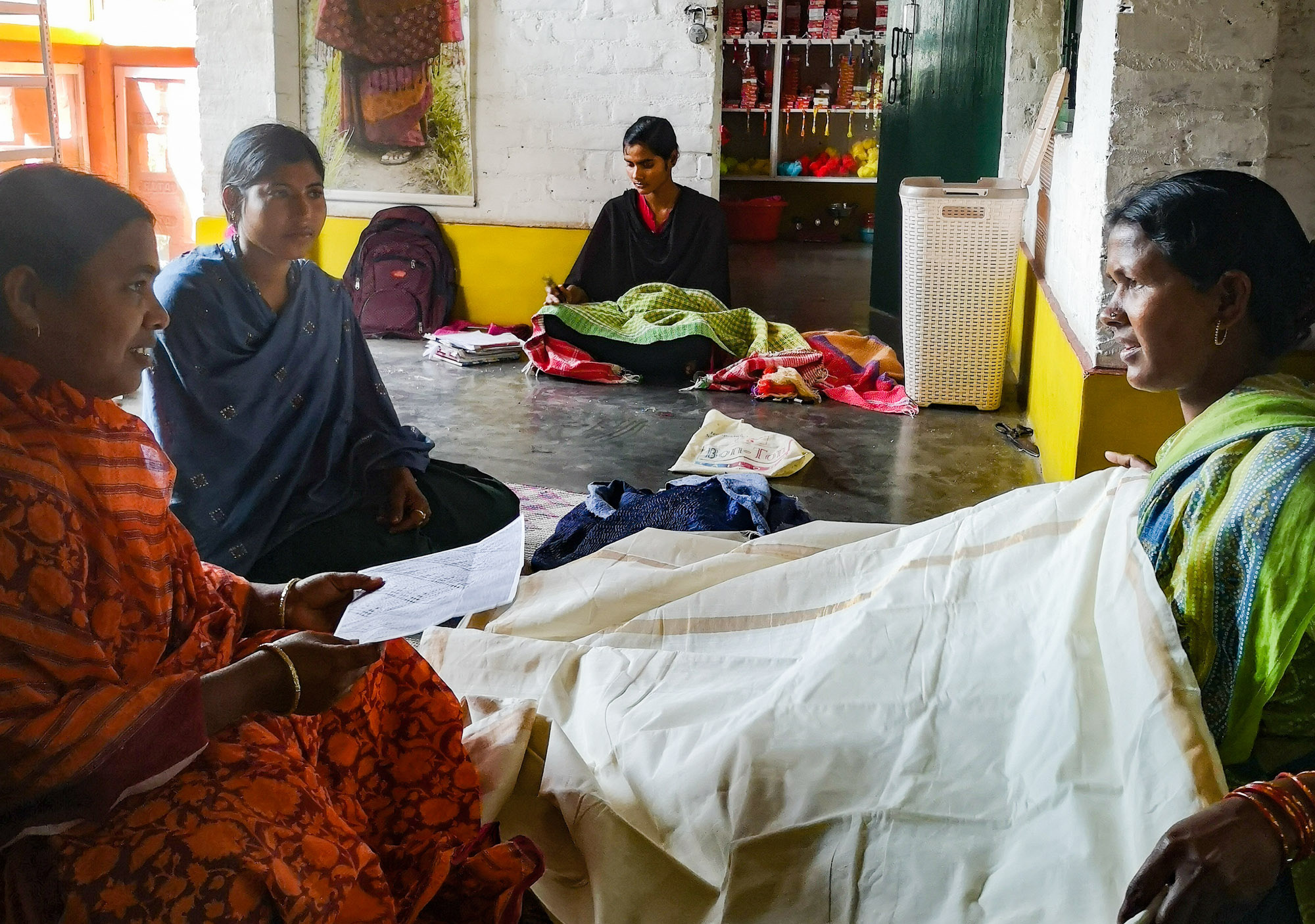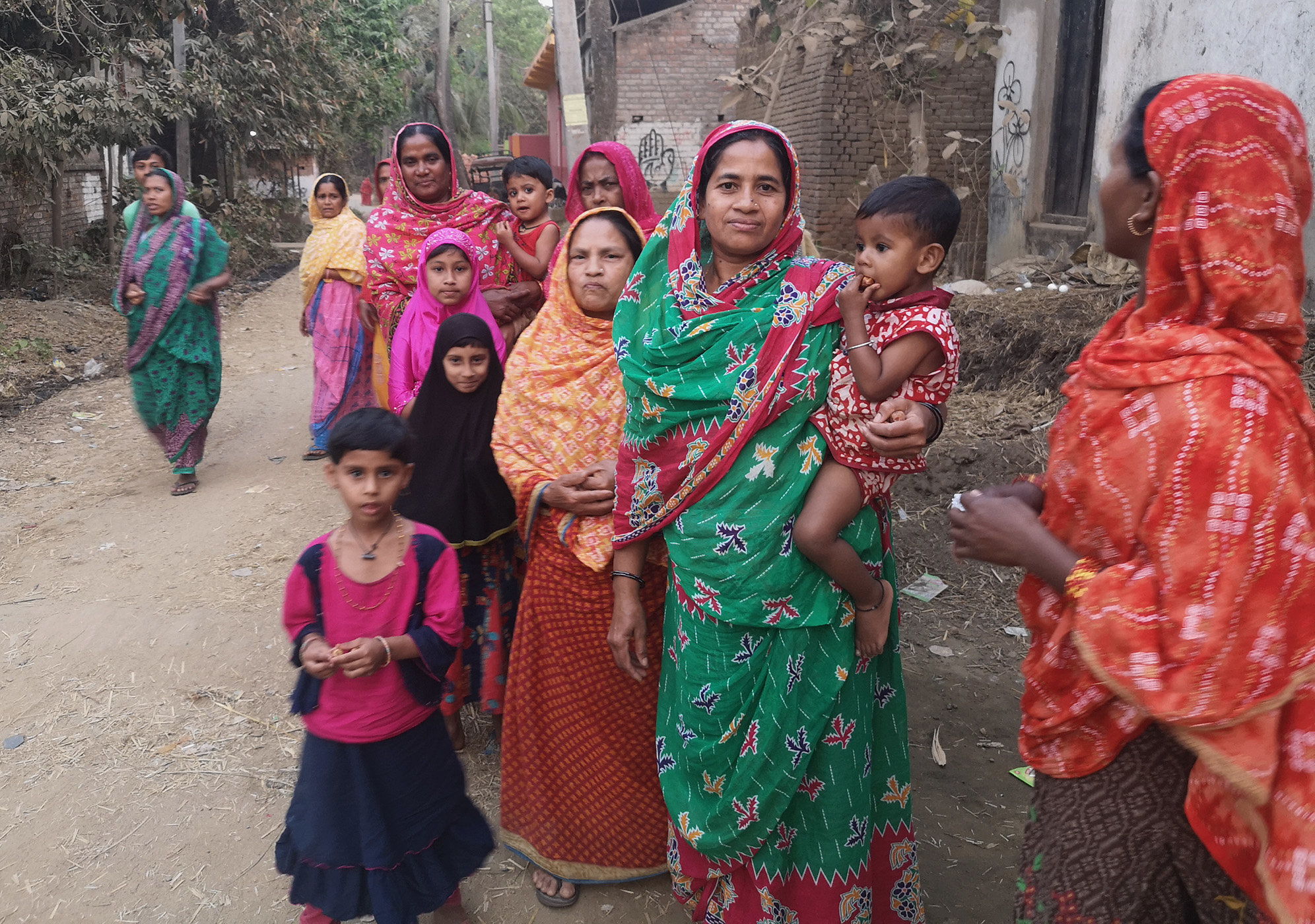It all started in a small village in the far east of India, on the border of Bangladesh. One woman saw an opportunity for all women: kantha embroidery. A way out of poverty and financial dependence.
To the Far East of India
It takes about three hours by train from Kolkota (formerly Calcutta) to Berhampur. This eastern part of the Indian state of West Bengal is an agricultural area. The rice fields stretch as far as the eye can see, and at every station a procession of musicians, handkerchief sellers, snack preparers, tea and coffee pourers crowd onto the train.
From Berhampur it is another hour by bus to get to the heart of the kantha embroiderers. The founder of the large kantha network lives in a 'haveli' (a kind of maison) on the edge of a hamlet. Her house is the meeting point for the hundreds of women who embroider for their independence.
How it started
The lady of the house, Shabnam, not only provides women with kantha embroidery, but has also founded schools in the most remote areas. Offering opportunities to the most underprivileged, that is her mission. Education and work are two pillars of the NGO set up for these activities. Shabnam is now 68 years old, but still works at a fast pace, day in and day out. Her drive and motivation come from a dark period in her life.
Personal drama
Shabnam was married off at 16 to a man twice her age. Years of exploitation and abuse followed. Her carefree childhood in a privileged family of doctors came to an abrupt end and after eight years she was evicted with three of her six children.

(Pictured: Shabnam in front of her shop)
She remarried the man she founded schools with in rural West Bengal. She did the same in her native village. A bold plan that could count on the stiffest resistance.
Sadly, Shabnam's husband died before their first school was dedicated.

The veranda as the centerpiece
Every day women from far and wide come by bus to the haveli to ask for work. The porch is the center of embroidery activities. Women select fabric and embroidery floss and discuss patterns.

Origin of Kantha
Kantha embroidery is an ancient tradition in West Bengal. The oldest forms of embroidery that can be traced back to Kantha date back to about 1500 years before our era. Kantha originated from thrift. Double-layered blankets and clothing were made from old, worn scraps of cloth by placing them on top of each other and basting them all over the surface. Originally, even the yarn was taken from the old cloth.
Reusing silk sarees
The women make our colorful scarves and shawls from worn silk saris. The sari, the national dress of Hindustani women in India, is about 6 meters long. Silk sarees are a precious possession. They stay in the family for a long time and pass from mother to daughter. When they are eventually disposed of, the local pot-and-pan woman comes to trade them for cooking utensils, or buys up the saris. In turn, she resells the saris to those who can use them.
In addition to scarves, the women also make cotton bedspreads, napkins and quilts.
Patriarchal community
There is no industry in this part of West Bengal. People have to make a living from their small livestock and from what they grow on the land. It's barely enough for most. Women work hard. They take care of the livestock, their children and the household. The communities are strongly patriarchal, which means they have little chance of self-development. Women are illiterate and economically dependent on their husbands and their families.

Fairly paid Kantha
Kantha shawls are popular worldwide. Unfortunately, many of these scarves are made by women who are not or hardly paid for it. The women who make our scarves can do that at home at their own pace. They have their own bank account and are paid fairly for their work. They receive a fixed price for the type of embroidery (simple or complex) per meter.
Making a scarf takes about 15 to 30 days, depending on the size and how many hours a day the women work on it. On average they embroider about 3 hours a day.

